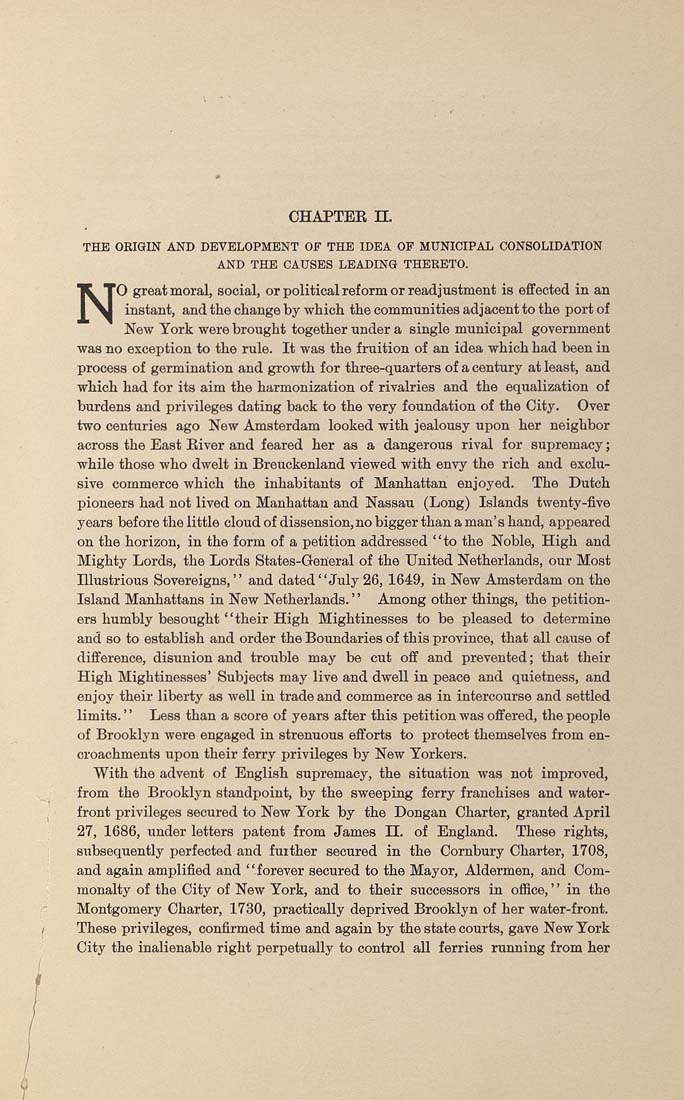CHAPTER n.
THE ORIGIN AND DEVELOPMENT OF THE IDEA OF MUNICIPAL CONSOLIDATION
AND THE CAUSES LEADING THEBETO.
NO great moral, social, or political reform or readjustment is effected in an
instant, and the change by which the communities adjacent to the port of
New York were brought together under a single municipal government
was no exception to the rule. It was the fruition of an idea which had been in
process of germination and growth for three-quarters of a century at least, and
which had for its aim the harmonization of rivalries and the equalization of
burdens and privileges dating back to the very foundation of the City. Over
two centuries ago New Amsterdam looked with jealousy upon her neighbor
across the East River and feared her as a dangerous rival for supremacy;
while those who dwelt in Breuckenland viewed with envy the rich and exclu¬
sive commerce which the inhabitants of Manhattan enjoyed. The Dutch
pioneers had not lived on Manhattan and Nassau (Long) Islands twenty-five
years before the little cloud of di3sension,no bigger thanaman'shand, appeared
on the horizon, in the form of a petition addressed "to the Noble, High and
Mighty Lords, the Lords States-General of the United Netherlands, our Most
Illustrious Sovereigns," and dated "July 26, 1649, in New Amsterdam on the
Island Manhattans in New Netherlands.'' Among other things, the petition¬
ers humbly besought "their High Mightinesses to be pleased to determine
and so to establish and order the Boundaries of this province, that all cause of
difference, disunion and trouble may be cut off and prevented; that their
High Mightinesses' Subjects may live and dwell in peace and quietness, and
enjoy their liberty as well in trade and commerce as in intercourse and settled
limits." Less than a score of years after this petition was offered, the people
of Brooklyn were engaged in strenuous efforts to protect themselves from en¬
croachments upon their ferry privileges by New Yorkers.
With the advent of English supremacy, the situation was not improved,
from the Brooklyn standpoint, by the sweeping ferry franchises and water¬
front privileges secured to New York by the Dongan Charter, granted April
27, 1686, under letters patent from James H. of England. These rights,
subsequently perfected and further secured in the Cornbury Charter, 1708,
and again amplified and "forever secured to the Mayor, Aldermen, and Com¬
monalty of the City of New York, and to their successors in ofiice,'' in the
Montgomery Charter, 1730, practically deprived Brooklyn of her water-front.
These privileges, confirmed time and again by the state courts, gave New York
City the inalienable right perpetually to control all ferries running from her
A
|








